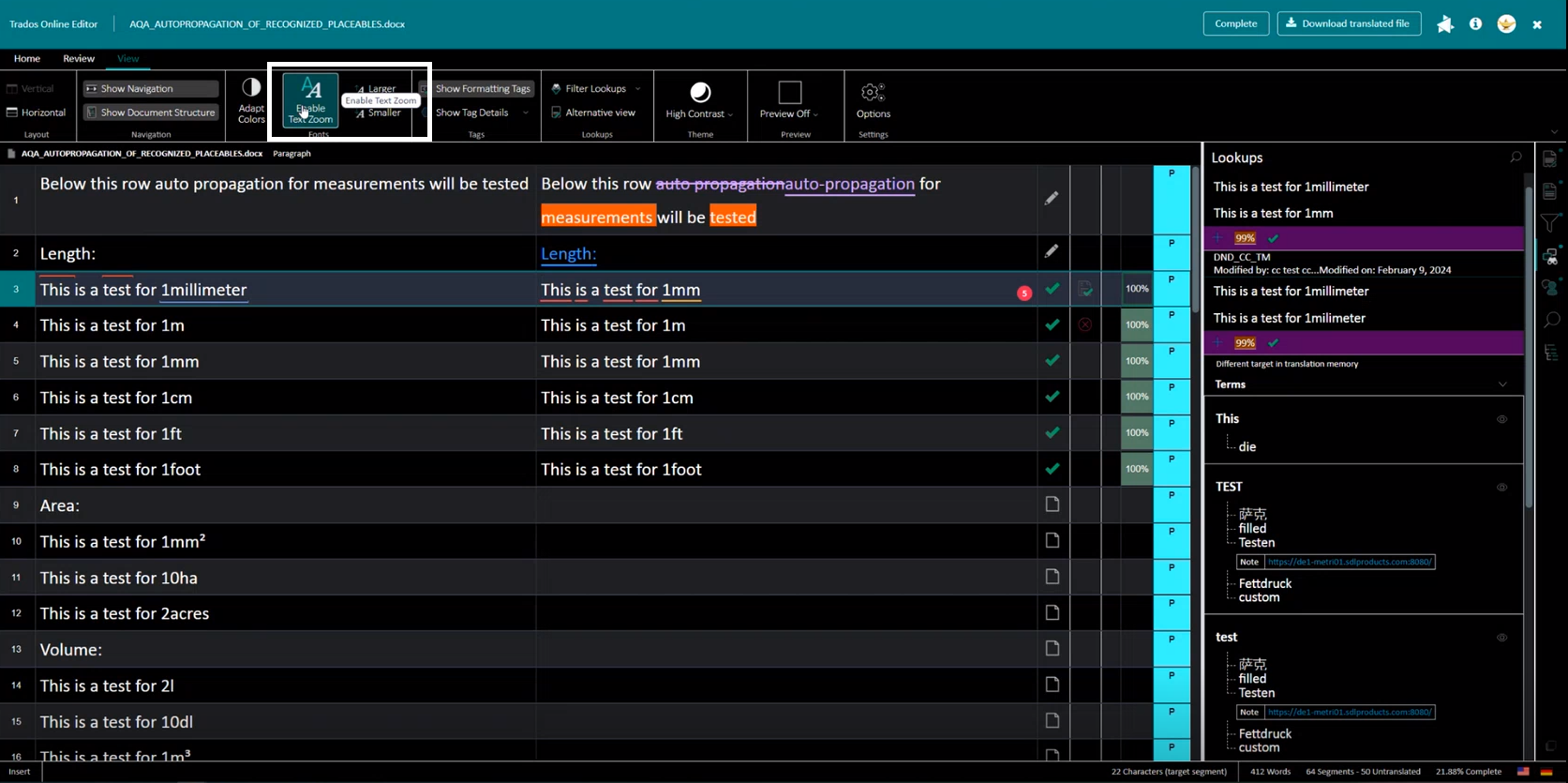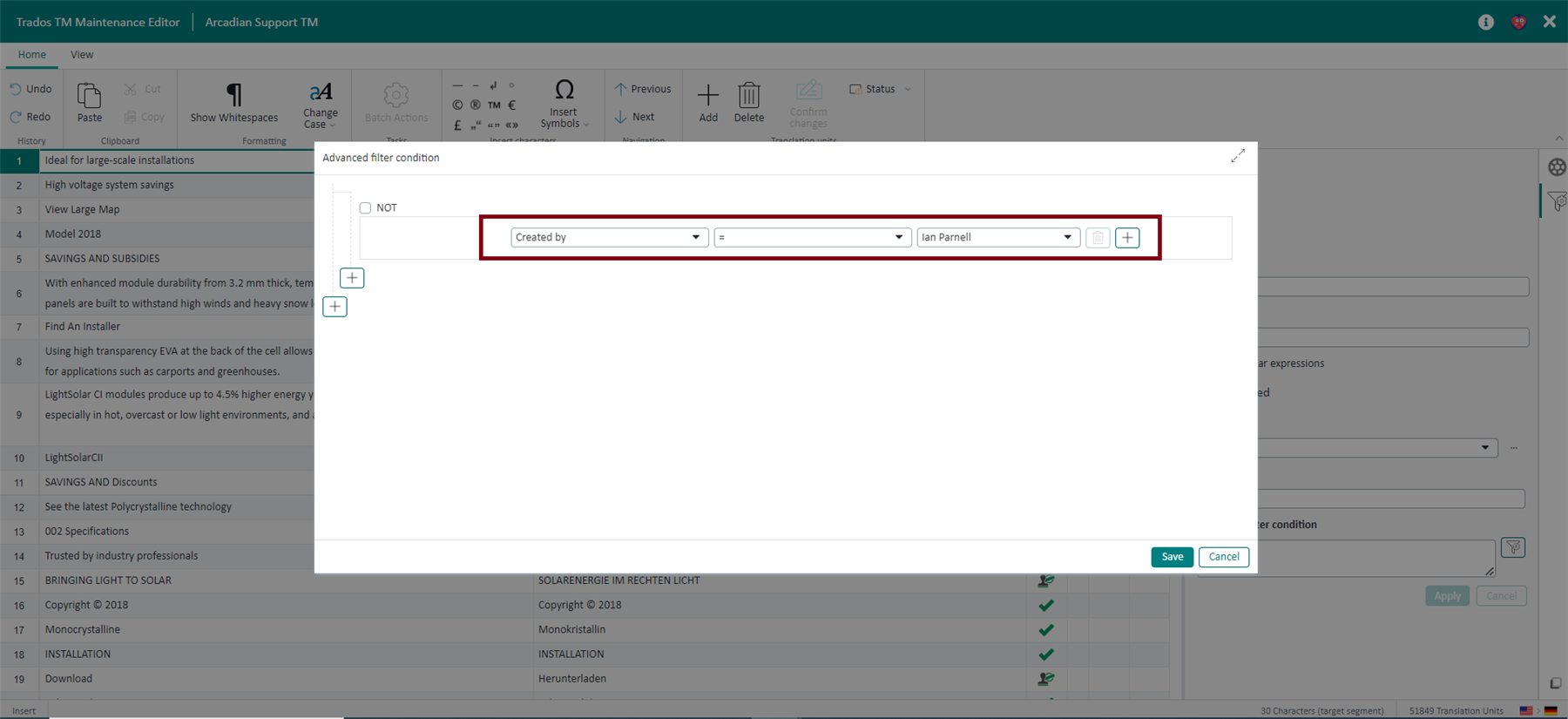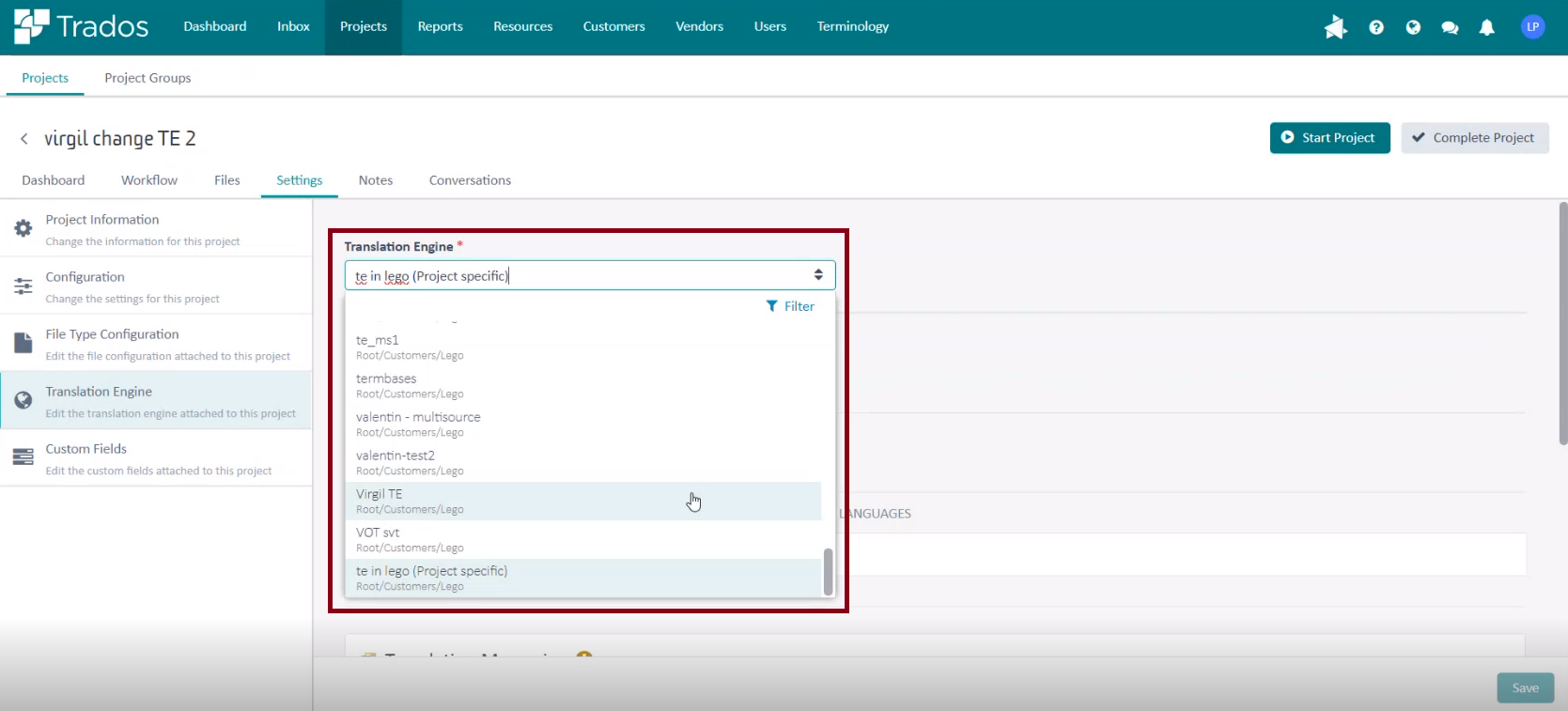H1 2024, including July 2024, was another very busy period for the Studio and cloud teams! Below is a summary of the features, improvements and fixes that we have released during the first half of 2024 for the cloud capabilities available with Trados Studio. In addition to these browser-based enhancements, we have also released a major release for Trados Studio, referred to as Trados Studio 2024. For information on the Trados Studio changes in the 2024 release, see the release notes document at https://docs.rws.com/TradosStudio2024/ReleaseNotes.
Let's now dive in and look at the extensive improvements across Online Editior, Translation Memory, Terminology, AI and platform enhancements!
Trados Studio 2024 - Cloud improvements
The long-awaited Trados Studio 2024 release has arrived and brings great improvements when working with the Trados cloud platform.
Leverage cloud-based resources in batch tasks
If you have a Trados Team, Trados Accelerate, or Trados Enterprise subscription, you can now leverage your cloud-based resources when running the Analyze Files or Pre-Translate Files batch tasks in Trados Studio for local projects. This enhancement means that any cloud engines specified in the project settings will be fully used in the batch flow for both local and cloud projects (after downloading all files locally) in Trados Studio. Your reports will accurately reflect the cloud resources leveraged, which means all sophisticated features of the Analyze Files batch task are supported. You can now receive metrics on internal fuzzy leverage, find and export unknown and frequent segments, just like for other project types, such as local or GroupShare projects. While this functionality is not available in the free Studio cloud capabilities, it's still important to be aware of them to know which additional functionality you will get when upgrading to one of the paid Trados subscriptions especially when it comes to the integration of Trados Studio with our cloud platform.
QA Checker settings for offline cloud packages
Trados Studio now ensures consistent QA Checker settings for offline cloud packages created from cloud projects. This enhancement is available in both the 2024 and 2022 versions of Studio, providing a seamless quality assurance experience across different project types, workflows and Studio versions.
Support for cloud projects in Manager view
Trados Studio 2024 marks the official launch of the Manager view, which was previously available in its beta phase in Trados Studio 2022. As part of the Manager view's full release, we have seamlessly integrated it into Trados Studio, and removed the toggle for enabling it. You can now open the Manager view from the left sidebar, just like any other view. The newly added support for cloud projects rounds out the package of all your most useful project management tools into a single optimized view. You can now perform all of your important actions such as downloading cloud projects, opening projects, working on them, viewing statistics and more, all from the Manager view.
Faster and more accurate progress reporting
We've adjusted the way Trados Studio handles reports and statistics in order to ensure more precise and real-time progress reporting of the accuracy of your translations.
For more information on the many other enhancements in Trados Studio 2024, see the release notes document at https://docs.rws.com/TradosStudio2024/ReleaseNotes.
Online Editor Updates
We have delivered further accessibility improvements for the Online Editor in recent releases as follows:
- A new High-contrast theme is now available for Online Editor
- The Text Zoom feature has been extended to include content displayed from the side panel

In addition, we have updated the icons in Online Editor to convey a more modern look-and-feel, and a simplified ribbon display option is also available.
Finally in Online Editor, a new filter option can be selected to display Repetitions.
Translation Resources
TM Maintenance updates
It is now possible to add individual Translation Units directly when using the TM Maintenance Editor. This is helpful in cases where you know edits have been made to a translation after the fact and you want to ensure those changes make it into the TM.

When working with filters from the TM Maintenance Editor, it is now possible to include system fields that are based on username. As an example, this allows you to create a filter to include all segments created by a specific user.

The side panel can now be detached from the TM Maintenance Editor, providing users with greater display flexibility when working with multi-screen setups.

Update Translation Engine in Project
It is now possible to update the translation engine for an existing project.

When updating the Translation Engine, a warning message is displayed if the newly selected Translation Engine has different Language Processing Rules defined to the original Translation Engine.
A new permission has been introduced, governing access to this feature, which is included for the Administrator, Project Manager and Lead Project Manager default roles. The permission should be granted manually to any Custom Roles where this functionality is needed.
UX improvement in Resources view
As the number of resources has grown, we have streamlined the Resources sub-menus to tidy up the list.
As such, we have now consolidated Translation Engines, Translation Memories, Termbases and NMT models into a Linguistic Resources sub-menu.
This allows more room for additional sub-menus in the Resources view.

Also, we have introduced Location trees, available in other screens in the UI, in Translation Memory, File Type Configuration and Language Processing rules filter views. This provides a cleaner and more hierarchical view on resources:

Artificial Intelligence (AI) Features
AI - Trados Copilot - Smart Review
Trados Copilot - Smart Review uses AI to evaluate the quality of translations in your documents while you are working in Trados Studio or the Online Editor. This means you can focus on those segments that need attention based on the evaluation score it provides.


To perform the evaluation, Smart Review uses an Azure OpenAI LLM which is prompted with information on other approved segments and approved terminology. For those customers that already have the Smart Review feature enabled, you can now configure your implementation yourself from within your tenant by providing the details of your subscription. For those customers who don’t currently have this enabled, please contact us to discuss how you can purchase subscription packages such as AI Essentials that will give you access to this feature and other AI-enabled features. To configure Smart Review, go to the Integrations menu in your account and you’ll see a new tab:

You can add a new provider or configure an existing one and provide the relevant detail:

Support for working with translation files processed using AI - Machine Translation Quality Estimation (MTQE)
If you have a customer that sends you files using Language Weaver for machine translation with a language pair that supports Machine Translation Quality Estimation (MTQE), the quality estimation results are now visible in both the Online Editor and Trados Studio 2024. The results are color-coded to allow you to quickly identify which segments are good (green), which ones are adequate (amber), and which ones are poor (red). When you open the file for editing, you will see the color code as part of the segment status.


AI - Generative Translation
Generative Translation harnesses the power of Large Language Models (LLMs) to give you an AI-powered translation which improves over time. Our traditional approach to translation has been to maximize the technology and assets at our disposal, namely translation memory, terminology, and neural machine translation. With the increasing availability of AI, we are launching a new translation capability which uses an LLM to provide translations. The secret to using the LLM is to provide it with more information which will help guide it to the correct result. We can use previously translated segments from the translation memory and applicable terminology to ensure that the generated translation uses the correct style and tone. You can also guide the engine with custom instructions such as audience, gender bias, length restrictions etc. by using metadata from the translation project.
For those customers who don’t currently have this enabled, please contact us to discuss how you can purchase subscription packages such as AI Essentials that will give you access to this feature and other AI-enabled features.
Notifications display preference
Trados users now have greater flexibility to decide where notifications are positioned within the interface.
By default, notifications appear in the top right of the interface, but through the introduction of a new user setting, it is now possible for notifications to appear in other parts of the interface (top right, top left, bottom right and bottom left), according to an individual's preference.
This can be helpful, for instance, where the notification placement can obscure visibility of some buttons.
This can be configured from Avatar -> User Settings -> Appearance

Additional changes
- As previously announced, we will start enforcing Translation Memory size limits of 2 million translation units per language direction soon.
- Improved accessibility for visually impaired users in Terminology and Download Project Files areas
- System Status fields in Terminology in Online Editor are now displayed clearly with colors, so it’s easier to identify Approved vs. Forbidden terms
- Introduced Overdue, Due Today and Due Tomorrow quick filters in Task Inbox, Project List and Project Stages views
- Menu items with multiple sub-menus in Navigation bars will now display which sub-menu is active
- Resolved an issue where text strings were not removed in language fields when typing language codes or language names and confirming
- The maximum length verification QA check has been extended to 2000 characters
- Introduced support for Russian (Israel) with the language code ru-IL
- Added support for fields in TMX files coming from MemoQ and Deja-Vu to be imported into Trados TMs
- For Custom Human tasks, we now show the task type in the Workflow Editor to more easily identify tasks that have a custom name
- Various bug fixes and UX enhancements
- We have introduced a new "Completed" status for vendor orders which applies when all the files which are part of a vendor task are completed or assigned away from a vendor. If a project consists of multiple file batches, the initial batch assigned to a vendor is completed, but the rest of the batches assigned to the same vendor are not completed, then the status of the vendor quote for that project will revert from "Completed" to "In Progress".
- We now retain task assignments where individual target languages are excluded from a workflow, meaning that if those target languages are reinstated for a task, the original assignments values are restored. This functionality will be extended to source language-based tasks and global task assignments in a future update.
- Project Groups can now include up to 500 Projects.
- Picklist options are sorted alphabetically in Custom Fields
- A new permission has been introduced making it possible for users to update the Quote Template associated with a Project Template without having full edit permissions for Project Templates in general.
- Various bug fixes and UX enhancements.
We would like to take this opportunity to thank all of our customers for their support and feedback! We hope everyone has enjoyed and benefited from the features released during the first half of 2024 as much as the Trados team have enjoyed developing them and making them available in our product. We look forward to delivering many more new features and capabilities in the second half of 2024!
Thanks once again from all of us at the Trados team!

 Translate
Translate